Ruben Amorim and Man United: Is This the Long-Term Vision for Jason Wilcox’s Game Model?
When Ruben Amorim was appointed Manchester United manager in late 2024, the decision felt like a bold statement. Amorim, fresh off a successful spell at Sporting CP, was hailed as a progressive coach with a clear tactical identity. But in a club like United, where long-term vision has often clashed with short-term desperation, the big question remains: Is Amorim the right fit for Jason Wilcox’s game model and Manchester United’s long-term vision?
Or is he just another name in a revolving door of managers destined to be cast aside when the results inevitably falter? With Ruben Amorim declaring this as the “worst team maybe in the history of Manchester United” right now it seems like we are a long way away from the long term vision of Jason Wilcox’s Game Model.
“We are the worst team maybe in the history of Manchester United. I know you [media] want headlines but I am saying that because we have to acknowledge that and to change that. Here you go: your headlines.”
For a club that has spent over a decade lurching between conflicting philosophies and signing players for systems that quickly change, it’s hard to shake the feeling that Amorim’s appointment could be another chapter in United’s cycle of chaos.
The Promise of Ruben Amorim
Ruben Amorim arrived at Old Trafford with a reputation for tactical flexibility, player development, and high-energy football. At Sporting CP, he implemented a successful 3-4-3 system that prioritised quick transitions, attacking width, and positional discipline. Under Amorim’s guidance, Sporting punched above their weight in Europe and ended a nearly two-decade wait for a Portuguese league title.
In his first few weeks at United, Amorim promised fans they would “see an idea” on the pitch. Early signs of a structured, high-intensity approach were visible, with the team showing flashes of cohesive football in tough matches against Manchester City and Liverpool. But for all the optimism, the elephant in the room remains: Is Amorim’s system aligned with Jason Wilcox’s game model?
What Is a “Game Model”?
A game model is a football club’s blueprint for its playing style, tactical principles, and overall footballing identity. Unlike short-term tactical adjustments, a game model governs long-term decision-making, aligning the way a club recruits players and coaches with a consistent philosophy. It covers key elements such as:
- Playing Style: How the team approaches different phases of play (in possession, out of possession, transitions, and set-pieces).
- Recruitment Strategy: Identifying players and staff who fit the club’s identity and style of play.
- Development Pathway: Ensuring academy players are trained and developed to seamlessly integrate into the first team.
For Manchester United, the game model is not just a tactical plan but a mission to transform the club’s culture and bring an end to years of incoherence.
Jason Wilcox’s Vision vs Amorim’s Philosophy
Jason Wilcox’s appointment as technical director was supposed to bring stability and consistency to Manchester United. His game model, inspired by his time at Manchester City, is built on key principles:
- Establishing a consistent playing style across all levels of the club, from youth teams to the first team.
- Focusing on a style that delivers winning, attacking, and entertaining football.
- Ensuring recruitment is anchored towards a specific methodology, identity, and style of play, rather than the previous scattergun approach.
- Creating a system that allows for seamless progression of youth players into the first team, as evidenced by the success of players like Alejandro Garnacho and Kobbie Mainoo.
- Implementing a style that likely involves playing out from the back, inviting and beating the opposition press, and utilizing width effectively.
At first glance, Amorim seems like a logical fit. His philosophy aligns with Wilcox’s desire for high-energy, attacking football. His history of promoting youth talent at Sporting also fits the narrative of a manager who can utilise United’s academy graduates, like Toby Collyer and Kobbie Mainoo, in meaningful roles.
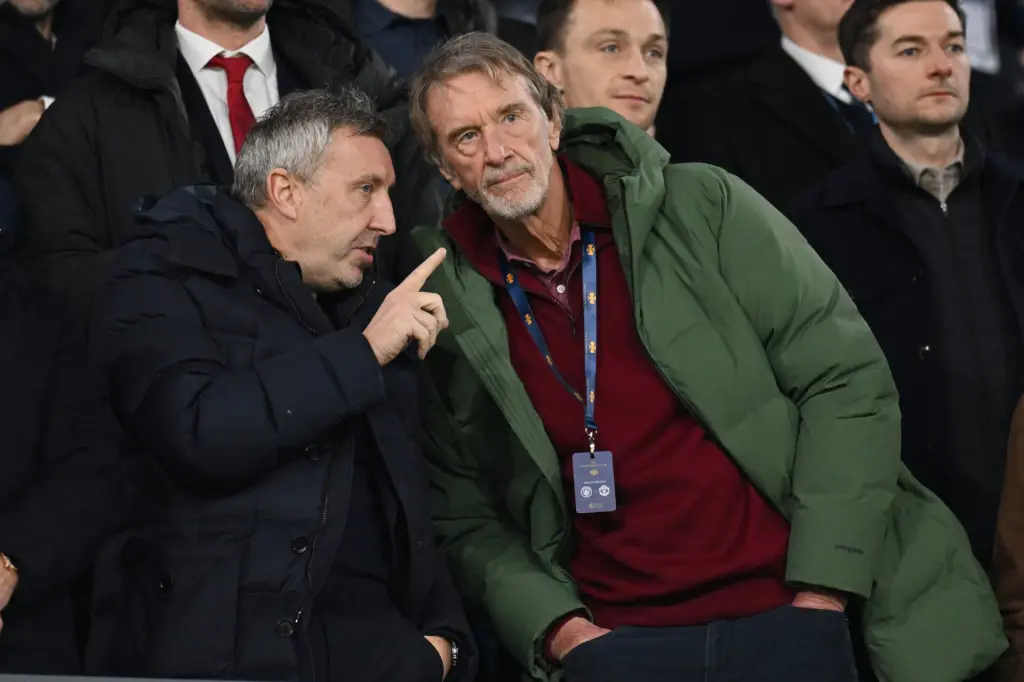
But here’s the problem: Amorim’s preferred 3-4-3 system is highly specific and requires particular player profiles. Wing-backs, ball-playing centre-backs, and versatile forwards are essential to its success. While this system can work within Wilcox’s vision, it requires significant squad adaptation, a task that has often proven fatal for managers at Old Trafford. When looking at the squad, it clearly lacks the players to suit the system.
“That is clear. With me, that is clear. Because I’m not going to change the way I see the game. I’m very clear on that. The players are going to suffer, I’m sorry, the fans are going to suffer. I have one way of doing things, I know it’s going to [bring] results. But we have to suffer these moments. I think it’s very clear for everybody what we are going to do.”
Man United lack the physical celling to be able to play the expansive football that Amorim wants, and while a great coach, Amorim and the fans will suffer due to his lack of pragmatism.
Is Amorim’s Style the Opposite of “The United Way”?
For decades, “The United Way” has represented an identity rooted in free-flowing, attacking football, built on pace, flair, and a refusal to compromise on entertainment. From Sir Matt Busby to Sir Alex Ferguson, Manchester United’s teams have thrived on instinctive attacking play, dramatic moments, and individual brilliance, often underpinned by wide players who could terrorise defences and a core of homegrown talent.
However, Ruben Amorim’s system-driven philosophy raises questions about how closely it aligns with this heritage. Amorim’s preferred 3-4-3 formation emphasises structure, discipline, and tactical precision over the raw attacking chaos that once defined United’s most iconic sides. While his system incorporates width and quick transitions, it is more methodical, relying on predefined roles and patterns of play that leave little room for the improvisation and freedom United fans have come to expect.
Jason Wilcox’s game model, designed to deliver long-term stability and a consistent identity, adds another layer of complexity to this debate. Wilcox’s vision is to create a cohesive, modern footballing identity that blends attacking football with tactical sophistication, but it is a style influenced by his experience at Manchester City, a club with a very different cultural DNA to United.
While Wilcox’s principles of high-energy, attacking football appear to align with Amorim’s methodology on the surface, the heavy emphasis on rigid tactical systems and positional play under Amorim risks straying too far from “The United Way.” Fans may begin to feel disconnected from a style that prioritises pragmatism and control over the unpredictability and dynamism that made Old Trafford the theatre of dreams.
For a club so proud of its traditions, the shift towards this modern, systematic approach may be necessary to compete at the top level, but it risks alienating a fanbase that still yearns for the magic and romance of the past.
A History of Short-Termism
Manchester United’s post-Ferguson era has been defined by inconsistent recruitment and conflicting managerial philosophies. The club’s squad is a patchwork of players signed for different systems under different managers:
- David Moyes: Inheriting a title-winning side, Moyes looked to reshape the squad with players he trusted and others with Premier League pedigree. His approach leaned towards traditional British-style football, relying on width, crosses and physicality. Yet the signings of Marouane Fellaini and Juan Mata, two players who suited completely different systems, highlighted a muddled recruitment strategy and reactive decision-making. Moyes had lined up ambitious targets like Cesc Fàbregas, Gareth Bale, and Thiago Alcântara, but United failed to secure any of them. A lack of decisiveness, especially in allowing Fellaini’s buyout clause to expire before overpaying on deadline day, defined the club’s transfer activity. The press quickly dubbed him “Dithering Dave,” a nickname that captured not just his hesitancy but a wider institutional failure to adapt to life after Sir Alex Ferguson. It was United’s first real taste of rudderless planning in the post-Fergie era, and it set the tone for what followed.
- Louis van Gaal: Prioritised technical security, tactical discipline and positional structure, but above all, he valued versatility. Van Gaal’s vision centred around players who could operate in multiple roles within a rigid system, often prioritising tactical flexibility over specialist skillsets. Daley Blind was signed ostensibly as a midfielder but ended up playing regularly at centre-back and left-back. Matteo Darmian featured on both flanks, while Ashley Young was converted from a winger into a wing-back. This approach allowed Van Gaal to shift formations mid-match, often from a back four to a back three, without substitutions. However, it also created a squad of utility players rather than positionally dominant ones. Creativity and instinctive attacking play were sacrificed for control and structure, leading to stale performances and a side that lacked natural rhythm in the final third. While the team became harder to beat, it rarely thrilled, and many of Van Gaal’s signings struggled once the system around them changed under the next manager.
- Jose Mourinho: Jose Mourinho built his Manchester United side around physicality, defensive solidity and individual match-winners, favouring players who could impose themselves physically and carry responsibility in key moments. His recruitment reflected this approach: Romelu Lukaku, Nemanja Matić and Zlatan Ibrahimović were all powerful, experienced figures suited to direct, reactive football. Mourinho wasn’t concerned with multi-functional roles or long-term squad cohesion, instead targeting players he trusted to deliver immediate results. The £89 million re-signing of Paul Pogba epitomised the contradictions in his strategy, a generational talent brought in to be the face of the club, yet shackled in a tactically conservative system that never allowed him to thrive. Pogba’s inconsistent performances highlighted the disconnect between marquee signings and functional football, with Mourinho’s system often prioritising discipline over creativity. While he delivered short-term silverware, including a Europa League and League Cup, the squad he left behind was a patchwork of individuals with no unifying tactical identity, making it difficult for his successors to build upon.
- Ole Gunnar Solskjær: Ole Gunnar Solskjær set out to rebuild Manchester United around youth, athleticism and quick transitions, aiming for a more modern, dynamic side after the rigidity of the Mourinho era. Early signings like Aaron Wan-Bissaka, Harry Maguire, Daniel James and later Bruno Fernandes and Jadon Sancho pointed to a team gradually developing an identity based on pace and verticality. However, United’s internal structure remained confused, with a transfer committee overseeing decisions and Solskjær often deferring rather than dictating. This led to ill-fitting additions like Donny van de Beek, who arrived without a defined role, and short-term names that disrupted the project. The return of Cristiano Ronaldo in 2021, heavily pushed by Ed Woodward and Sir Alex Ferguson, completely altered the tactical direction. Solskjær’s developing system, reliant on mobility and pressing, was replaced by a setup that revolved around accommodating an ageing centre-forward. The additions of Raphael Varane and Edinson Cavani reinforced the short-termism, experienced players signed to fast-track success, but who ultimately unbalanced a squad still learning how to play together. What had looked like a steady, if imperfect, rebuild was quickly undermined by impulse decisions from above, leaving Solskjær caught between long-term ideals and the club’s chronic need for instant gratification.
- Erik ten Hag: Erik ten Hag sought to impose a possession-based style underpinned by structured build-up and aggressive pressing, aiming to bring technical control and tactical cohesion back to a side long reliant on moments rather than method. His recruitment was centred around players he trusted or who matched his principles, Lisandro Martínez brought progressive passing and defensive composure, André Onana was key to building from the back, and Mason Mount was seen as a high-intensity presser capable of linking midfield lines. Yet several of these additions have struggled to adapt to the Premier League’s pace and physicality. Onana’s early mistakes, Mount’s limited availability due to injury, and the vulnerability of the press when key players were absent exposed the fragility of Ten Hag’s structure. The system demanded total buy-in and precise execution, but the squad, still a patchwork of previous regimes, couldn’t sustain the tactical demands consistently. Ten Hag often reverted to reactive football when control proved elusive, leading to identity drift and erratic performances. Like his predecessors, he inherited a squad with conflicting profiles and was tasked with bridging short-term results and long-term planning in an environment still defined by instability above him. Erik ten Hag quickly changed to pragmatism to get results in the short term after seeing his system could not work. While the intention to modernise United’s style was clear, the execution has been repeatedly undermined by recruitment inconsistencies, fitness issues, and the lack of a settled sporting structure, something Jason Wilcox is now meant to address.
The core issue isn’t just that managers change, but that each appointment has demanded a complete reimagining of the squad’s profile. Under Solskjær, for example, Paul Pogba, arguably the club’s most talented midfielder, never quite fit. He lacked the tactical rigidity to play at the base of midfield, where Solskjær preferred the industrious pairing of Fred and McTominay, whose primary strength was mobility and defensive coverage rather than creativity.
Romelu Lukaku, signed by Mourinho for his power and penalty-box instincts, was quickly sidelined for lacking the link-up play Solskjær demanded from his centre-forward. Mourinho himself had discarded Daley Blind, viewing the diminutive and versatile Dutchman, who thrived under Van Gaal, as too small and defensively fragile for the physical demands of his system. Van Gaal, in turn, had little use for Marouane Fellaini, a quintessential Moyes-style player whose physical, unorthodox game offered no value in a system obsessed with control, spacing, and possession.
Even recently, Ten Hag’s push to sign Lisandro Martínez, specifically for his ability to build out from the back, highlighted a sharp contrast to the limitations of Raphaël Varane, a defender brought in under Solskjær largely for his pedigree and defensive experience, not his comfort in possession. These aren’t just tactical tweaks, they are entirely different philosophies that ripple through recruitment, training, and matchday execution. The consequence is a fractured squad made up of players suited to completely different ideas of how football should be played, leaving every new manager not only rebuilding but unpicking years of conflicting planning.
Now, with Amorim in charge, questions arise: Are United signing players for a system that could be discarded within two years? And if so, does this undermine Wilcox’s efforts to build a long-term game model?
Recruitment Under Amorim: A Double-Edged Sword
Ruben Amorim’s arrival has already started to reshape Manchester United’s recruitment strategy, with the club reportedly targeting players tailored to his 3-4-3 system, ball-playing centre-backs, dynamic wing-backs, and attacking midfielders who thrive between the lines. Profiles like Patrick Dorgu, a versatile player with impressive physicality but still raw and unpolished, seem to fit the mould of what Amorim wants.
However, now the club is now actively seeking buyers for Alejandro Garnacho and Marcus Rashford, two players who have been pivotal in recent years. These decisions highlight the potential pitfalls of a system-driven approach: while it may prioritise tactical cohesion, it risks alienating fan favourites and disrupting the team’s emotional core. It also raises concerns about whether the new direction is a long-term vision or another gamble in the name of short-term results.
But then you look back at the summer window, and it raises even more questions. Noussair Mazraoui was brought in, but he doesn’t look suited to play as a right wing-back in Amorim’s system. Matthijs de Ligt is a top defender, but pairing him with Harry Maguire has exposed issues in mobility, it seems clear another centre back with pace such as Ousmane Diomande or Micky Van de Ven is required to play this style in the Premier League.
Manuel Ugarte has been a standout performer, admittedly, but Joshua Zirkzee seems like an awkward fit, he’s a technically gifted footballer, yet he doesn’t work as one of the 10s in Amorim’s 3-4-3 and lacks the clinical edge to lead the line. These signings feel mismatched to the current manager’s tactical demands, further strengthens the suspicion that these players weren’t brought in with a cohesive game model in mind. Instead, it feels like another example of the club’s recurring issue: a lack of alignment between recruitment and the manager’s vision.
History suggests caution. Under Erik ten Hag, Manchester United spent over £200 million in one summer, bringing in players like Antony and Lisandro Martinez to suit his specific Ajax-inspired system. Yet, less than 18 months later, Ten Hag was gone, leaving behind a squad that was tailored to a vision which no longer existed. This is exactly why a game model is so crucial, a long-term framework that ensures the club’s recruitment and playing style remain consistent, even if the manager changes. Without it, United risk repeating the same cycle: backing a manager heavily, only to start over when results falter.
Could Amorim’s tenure follow a similar trajectory? It’s a troubling possibility. If United continue signing players specifically tailored to his 3-4-3 system but fail to achieve results, the next manager will inevitably inherit the same issues of mismatched recruitment that have plagued the club for years. The willingness to sell players like Marcus Rashford and Alejandro Garnacho, two of United’s most influential and exciting talents in recent seasons, only adds an extra layer of worry.
But while Amorim’s recruitment may be aligned to his 3-4-3 system, the broader concern is what happens to players who suddenly no longer “fit.” Already, the signs are troubling. Kobbie Mainoo, arguably the most exciting midfield talent to emerge from the academy since Paul Pogba, has looked increasingly awkward in Amorim’s structure. Deployed at times as a false nine or awkwardly shoehorned into a double pivot, his lack of physical presence has been exposed, while his intelligence and composure in possession, so vital in previous systems, have gone underused. He doesn’t naturally slot into either the pivot or the advanced “10” roles, and questions are already surfacing about his long-term place in the squad.
Alejandro Garnacho faces a similar dilemma. A player who thrived under Ten Hag’s counter-attacking approach and has broken into Argentina’s senior side, Garnacho’s directness and raw pace make him a difficult fit as a wide forward in a 3-4-3, where spacing, build-up and combination play take priority. If Amorim persists with a rigid interpretation of his system, are these players, both full internationals and academy standouts, at risk of being undervalued or even moved on?
That would raise serious concerns not only about short-term waste, but also about the viability of Wilcox’s vision. If the “game model” truly has a long-term framework, it can’t allow generational talents like Mainoo or Garnacho to become collateral damage just because they’re inconvenient for one manager’s setup. That tension between system and player, short-term performance and long-term planning, is where United have repeatedly lost their way. And it’s a cycle they simply can’t afford to repeat.
How can players so integral to the previous system suddenly find themselves expendable? This casual disregard for their contributions highlights the danger of focusing too heavily on rigid tactical profiles, rather than building a squad with adaptable players who can fit a broader game model. It begs the question: is this truly a long-term vision, or another instance of short-term thinking disguised as progress?
Wilcox’s game model was supposed to prevent exactly this type of short-term thinking. By prioritising players who fit a broader footballing philosophy, the club could avoid the constant churn of signings and sales. Amorim’s success, or failure, could determine whether this vision is achievable. And whether this vision of a game model is only an idea rather than a reality.
The Risk of Sacking Another Manager
Manchester United’s managerial instability has become a running joke in the Premier League. Ruben Amorim is the eighth permanent manager since Sir Alex Ferguson retired in 2013. Each sacking has been accompanied by a squad rebuild, a tactical shift, and a new “project.”
INEOS’ ownership, led by Sir Jim Ratcliffe, has already demonstrated a ruthless approach. Erik ten Hag was sacked just 13 games into the 2024/25 season, despite being given significant backing in the summer. Dan Ashworth, the sporting director brought in to reshape the club, lasted just five months before being dismissed.
Dan Ashworth’s sacking as Manchester United’s sporting director after just five months in the role stemmed from a breakdown in alignment with INEOS and Sir Jim Ratcliffe’s vision for the club. One of the key flashpoints was Ashworth’s reluctance to back Ruben Amorim as Erik ten Hag’s successor. Instead of endorsing the dynamic Portuguese coach, Ashworth reportedly favoured safer, Premier League-proven options like Eddie Howe, Marco Silva, and Graham Potter.
This approach clashed with Ratcliffe’s desire for a bold, charismatic appointment to energise the club’s project. Not only this, but, Ashworth’s suggestion to involve external data firms in managerial decisions frustrated United’s hierarchy, who expected decisiveness and expertise from their sporting director. His perceived passivity during the pivotal managerial search, compounded by a lack of influence in the appointment of Amorim, ultimately sealed his fate, as Ratcliffe moved to act decisively to enforce his vision.
If results under Amorim falter, what guarantees are there that he will be given time to implement his vision? And if he’s sacked, will United once again tear up the blueprint and start over?
The Fear of Another “Zombie Squad”
One of Jason Wilcox’s primary goals is to end the era of “zombie squads” at Manchester United, teams cobbled together from the remnants of multiple managerial reigns, each with their own vision, none of which ever truly stuck. These were squads where pressing players stood beside passive defenders, where counter-attacking wingers were fed by ball-to-feet midfielders, and where the dressing room felt more like a historical archive than a football team. They weren’t built to win. They were built to survive turnover.
But unless the club learns from its past, this cycle will repeat. The fear isn’t abstract, it’s baked into United’s recent history. Under Ed Woodward, there were repeated attempts to ‘back the manager’ without any real structural consistency. Managers were given funding, but not time. Systems were half-installed, then abandoned. Recruitment was reactive, often commercial, and almost always short-term.
Wilcox’s game model is supposed to change that, a unifying footballing philosophy that outlasts individual appointments. But that model only works if there’s alignment at every level: the manager, the scouts, the analysts, the boardroom. If Amorim is simply a passing phase, another system hire who’s jettisoned as soon as results wobble, then the model becomes meaningless. The club must either fully commit to Amorim, supporting his evolution within the framework Wilcox is building, or ensure that his appointment is compatible with a broader, non-negotiable football identity.
Because here’s the real danger: if United stack the squad with players suited only to Amorim’s specific tactical demands and then sack him in 18 months, they’ll have created another team of misfits. Another zombie squad. One manager’s high-pressing centre-back is another’s ball-chasing liability. One man’s wide-forward is another’s square peg. It’s not enough to hire clever coaches. United need footballing coherence. They need to decide what kind of team they want to be, not just for this season, but for the next five.
Otherwise, Wilcox’s vision will go the same way as those before it, a promising idea buried under the rubble of another rebuild.
Does the Game Model Even Exist?
Jason Wilcox was brought in to implement a long-term footballing identity, a game model that would outlast individual managers and shape everything from recruitment to academy development. But watching Rúben Amorim’s early days, it’s hard to know if that model even exists anymore. The idea behind a game model is clear: build a club-wide style that allows for continuity, even as managers come and go. But if Amorim has been allowed, or even encouraged, to impose his own specific 3-4-3 system, then what exactly is United building?
Amorim himself hasn’t shied away from staking his claim: “I will not change anything in the way I do things.” That’s admirable on one level, clarity and conviction are rare qualities at Old Trafford, but it also raises uncomfortable questions. Is this his system, or the club’s system? Has Wilcox backed a manager who fits into a broader philosophy, or simply handed over the reins and hoped for the best?
Because if Amorim’s approach isn’t part of a long-term game model, if it’s just the current flavour, not the future, then United are set up to fail again. This club has spent a decade backing managers with conflicting ideas, signing players tailored to short-lived systems, then scrambling to clean up the mess when it all inevitably collapses. If this is Amorim’s team and not United’s team, we’re not building a football club, we’re just repeating the same cycle with a fresh logo on the envelope.
And if there truly is a game model in place, why isn’t it reflected throughout the youth structure? At a club that prides itself on producing homegrown talent, you’d expect every age group, from the under-14s to the under-21s, to be playing in the same shape with the same tactical principles. That’s how you create seamless progression. That’s how you make sure a player promoted to the first team knows what’s expected, not just physically but tactically.
Right now, there’s no clear evidence of a unified style. Some youth sides play in a back four, others adopt completely different patterns. The transition from academy football to the senior squad still feels improvised. If a game model exists, it should be visible across the board, and yet, aside from the breakthrough stories of Alejandro Garnacho and Kobbie Mainoo from previous managers, the pathway feels more coincidental than designed.
There’s a generation of promising talent currently in the system, Amir Ibragimov, Tyler Fletcher, Jim Thwaites, Bendito Mantato, Chido Obi and JJ Gabriel among them, who would all benefit from learning within a clearly defined system. These are players with serious potential, technically gifted and tactically intelligent. But asking them to adapt to a first-team structure they’ve never played in is counterproductive.
A real game model would prepare them from the start, embedding the style, the structure and the expectations so that promotion to the senior squad isn’t a leap into the unknown. Without that alignment, even the brightest academy prospects risk being lost in transition, not because of their ability, but because the club still hasn’t decided what kind of football it wants to play.
A Test for Wilcox and INEOS
Ruben Amorim’s appointment represents a pivotal moment for Manchester United. On one hand, his philosophy and tactical style could bring the excitement and cohesion fans have been craving. On the other, his specific system and the club’s history of managerial churn create a dangerous cocktail of risk and instability if this isn’t what the game model was originally thought of.
The success of Amorim’s tenure will depend on whether Jason Wilcox and INEOS are willing to prioritise long-term stability over short-term results. If they fail to back their manager, Manchester United could find themselves right back where they started, signing and selling players for systems that change with every new managerial appointment. On the surface, right now Amorim looks like the wrong fit. Amorim’s style will not change, the club does not have the budget to spend, and the players to suit the system. He has been set up to fail by INEOS.
At this stage, it’s difficult to say whether Ruben Amorim truly embodies the long-term game model Jason Wilcox envisioned, or if his appointment was a reactionary move to replace Erik ten Hag amidst mounting pressure. Just months earlier, Amorim wasn’t even considered a top target, with the club passing on him during the summer. Now, with Ashworth dismissed and a sense of urgency driving decisions, it’s hard to know if this is a cohesive vision driven by football experts or simply firefighting. The club’s direction feels unclear, and while there’s hope that Amorim’s tactical acumen can bring success, the lack of alignment and the general uncertainty around Old Trafford leave plenty of room for doubt.
And the pressure is growing. United fans are already growing restless. Performances haven’t improved and the Europa League loss has only added on more pressure to Ruben and INEOS. The promise of a bold new era is being replaced by the same familiar noise: tactical confusion, squad imbalance and public uncertainty. At a club where patience is always thin, that pressure will only intensify with every defeat. No one will accept “long-term vision” if it’s just a cover for short-term chaos.
If Manchester United are serious about building an identity, this is their moment to prove it. Not with slogans, or branding, or last-minute panic hires. But with a clear plan, a game model that actually means something, and a willingness to see it through.
Because if this isn’t the model, if Amorim’s vision is just another manager’s preference, then what exactly are United building?


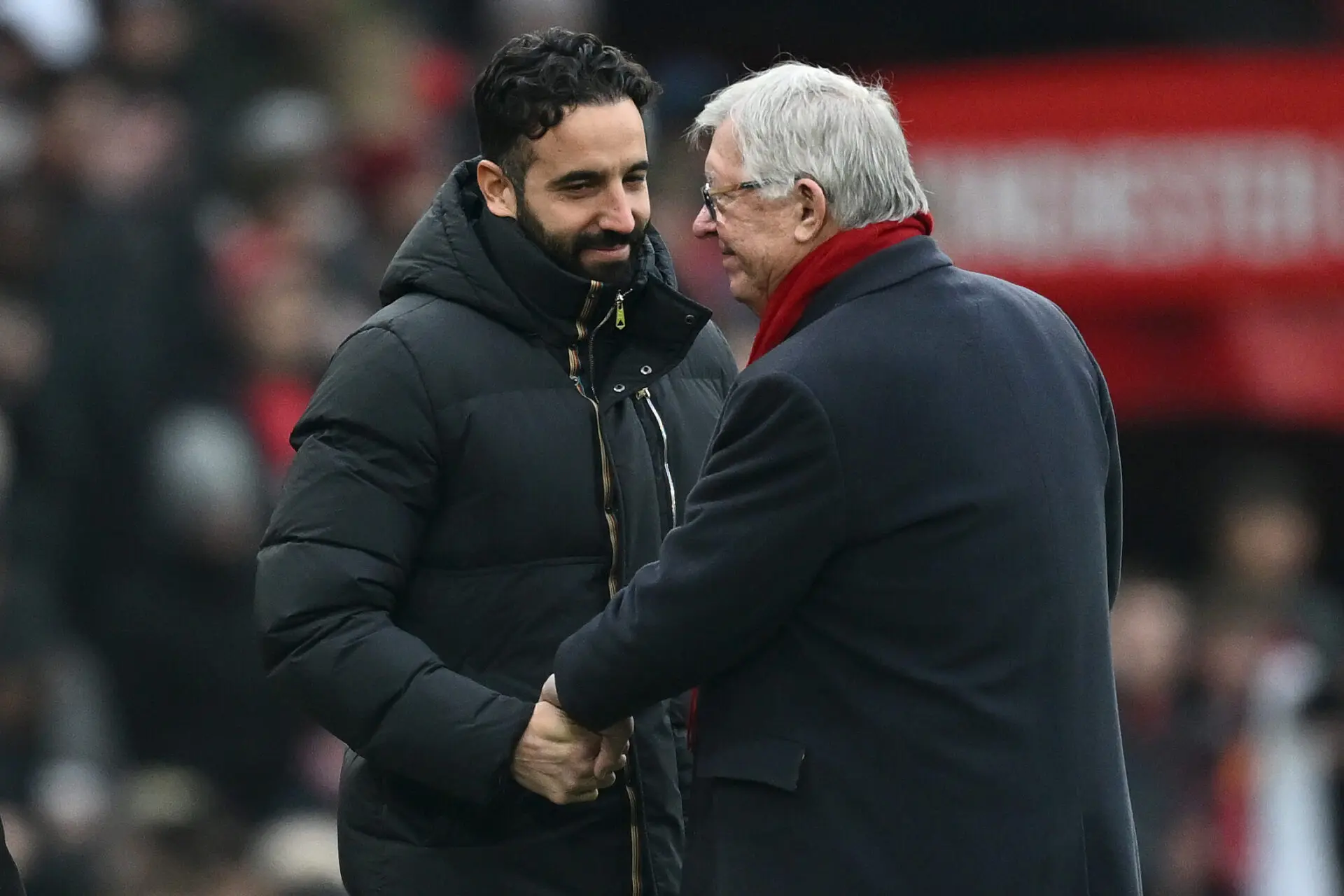
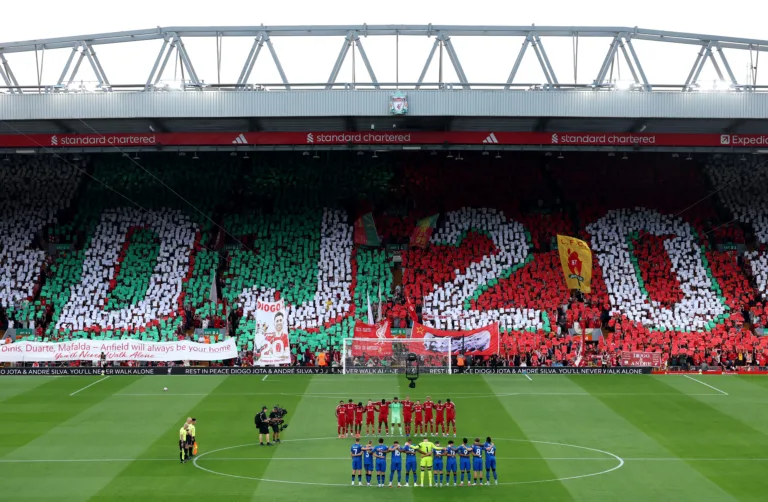
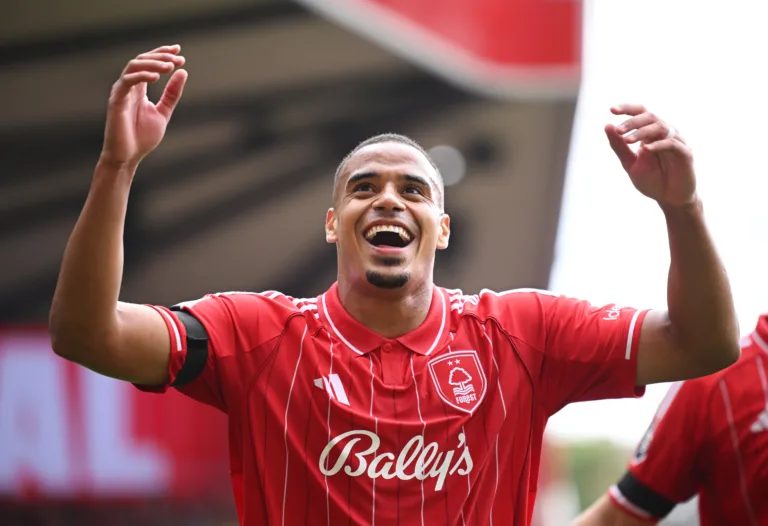
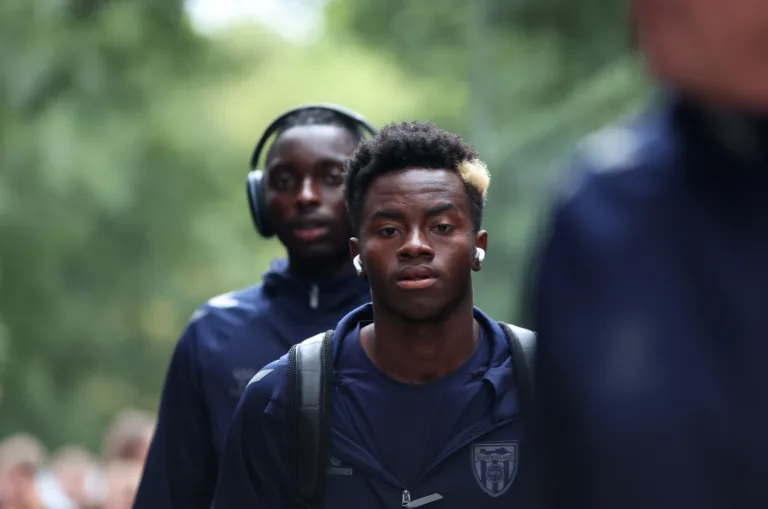
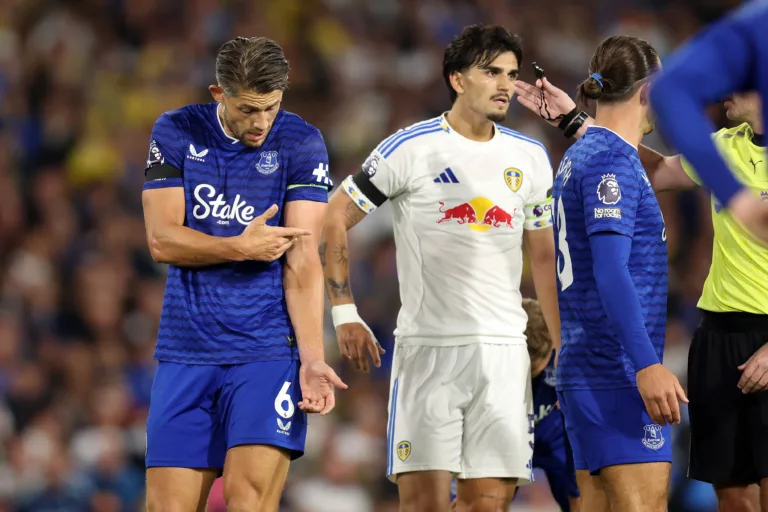
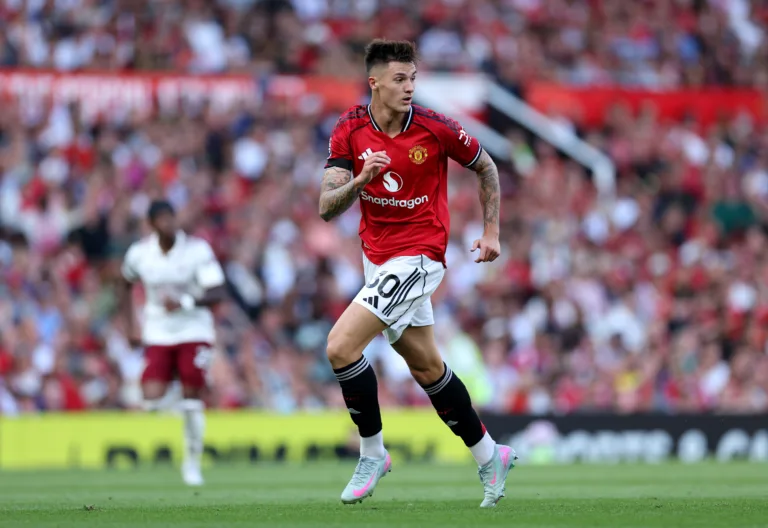
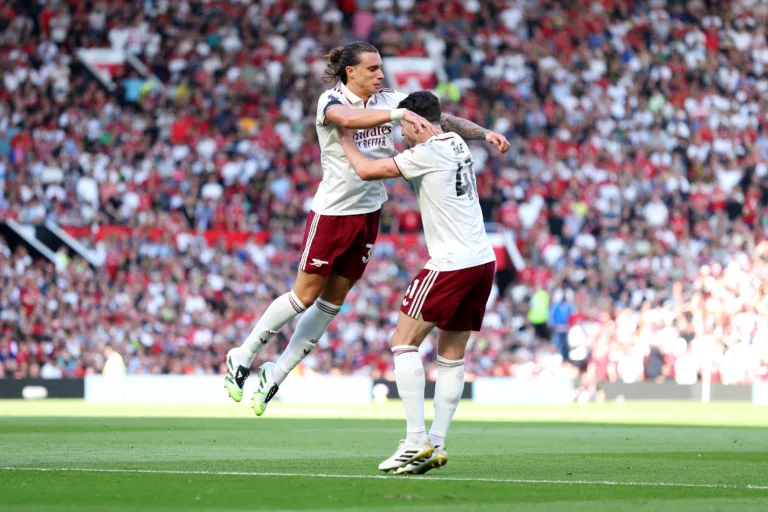
One Comment